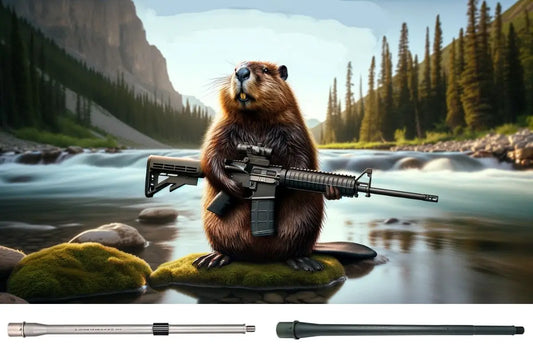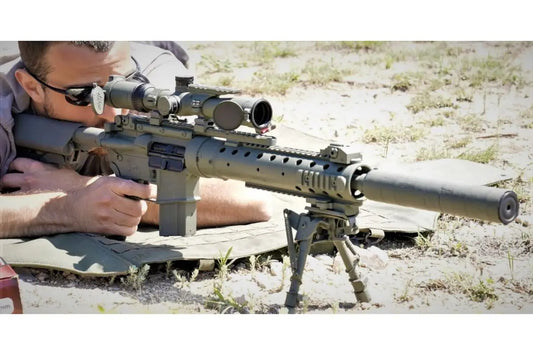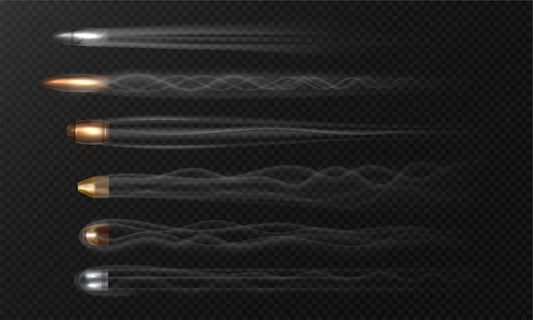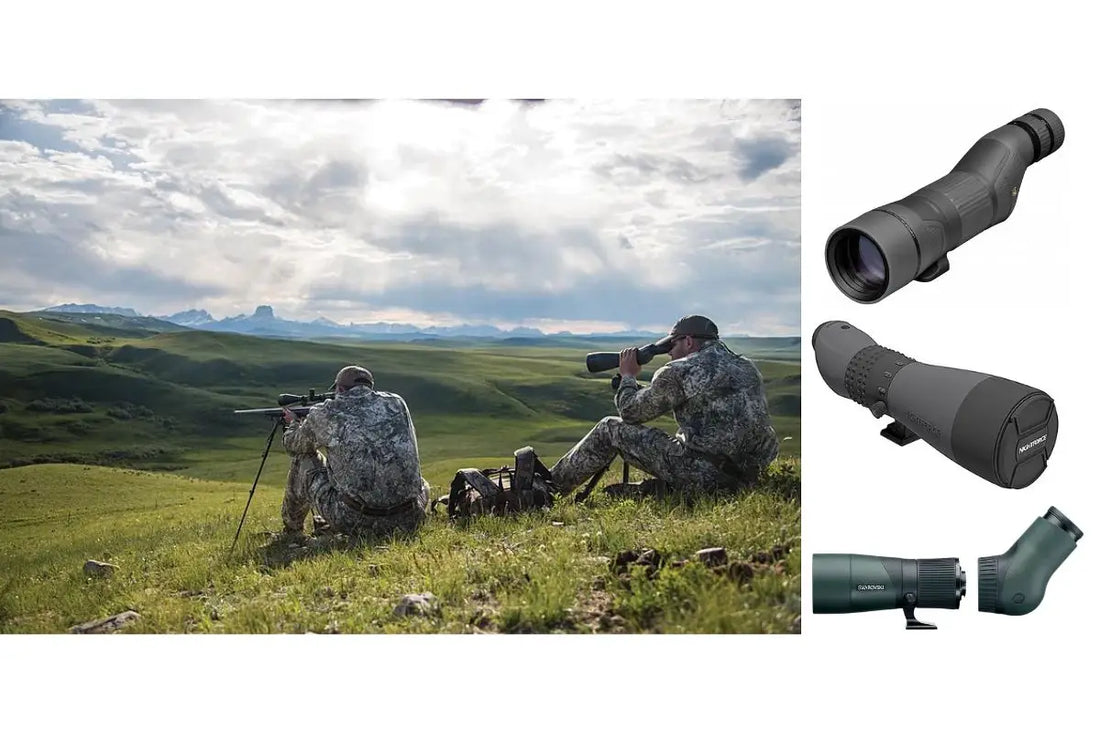
The Ultimate Spotting Scope Buying Guide: What to Look for Based on Your Mission—Hunting, Tactical, or Range Use
TL;DR for Skimmers:
When choosing a spotting scope:
- Hunters need lightweight, durable scopes with excellent low-light clarity.
- Tactical users should prioritize magnification, reticles, and rugged construction.
- Range shooters demand top-tier optics, fine focus, and stable platforms.
- Top all-around picks include the Vortex Razor HD, Swarovski ATX, and Leupold SX-4.
Why Spotting Scopes Are Mission-Critical
A spotting scope isn't just a luxury—it’s a force multiplier. Whether you're glassing mule deer across a valley, calling hits at 1,000 yards, or identifying targets under stress, your optics must work harder than your rifle. A good scope reveals what your rifle can’t. A great one changes how you hunt, shoot, and train.
Industry expert Todd Hodnett, former SOF sniper and founder of Accuracy 1st, puts it plainly:
"Your spotter needs to see more than you shoot. Good glass isn’t optional—it’s survival, accuracy, and effectiveness."
Let’s dive deep into the key features that matter for each mission type.
Spotting Scopes for Hunting
What Hunters Need:
- Compact, lightweight form factor: You'll carry it for miles.
- Low-light clarity: Dawn/dusk is prime hunting time.
- Magnification sweet spot: 15–45x is versatile and easier to stabilize.
- Weatherproof construction: Rain, snow, cold—be ready.
Top Recommendations:
🥇 Leupold SX-4 Pro Guide HD 15-45x65
- Price: ~$699
- Why it rocks: Lightweight magnesium body, Twilight Max HD light management, fog/waterproof.
- Weight: 62 oz
- Bonus: Lifetime guarantee, built in Oregon.
- Price: ~$699
- Why it excels: Ultra-light (25 oz), premium HD optics, rugged ArmorTek coating.
- Perfect for: Backcountry hunters prioritizing pack weight.
🥉 Kowa TSN-553 15-45x55 Fluorite Crystal
- Price: ~$1,800
- Optical edge: Fluorite glass for true-color rendering in complex terrain.
- Weight: 28 oz
- Ideal: Mountain sheep, elk hunts where weight vs. clarity is a game-changer.
Pro Tips:
- Straight vs. Angled eyepiece: Angled is more ergonomic for glassing hillsides; straight is faster for target acquisition.
- Use a compact carbon-fiber tripod for stability without the bulk (e.g., Slik CF-634, Leofoto LS-284C).
Tactical Spotting Scopes: Reticle + Ruggedness
What Tactical Operators Need:
- High magnification (20–60x): For PID, range estimation, and shot correction.
- Built-in reticle: MIL or MOA for ranging and spotting impacts.
- ED/HD glass: Detail resolution in variable lighting.
- Bombproof construction: Hard use, unpredictable environments.
Top Tactical Picks:
🥇 Nightforce TS-82 Xtreme Hi-Def 20–70x
- Price: ~$3,000
- What it offers: Index-matched ED glass, ultra-smooth helical focus, armor-tough build.
- Optional: MIL-R reticle eyepiece for ranging.
🥈 Leica APO-Televid 82 with 25–50x WW Eyepiece
- Price: ~$4,200
- Optical tier: APO lenses, fluoride glass, edge-to-edge clarity.
- Field benefit: Compact yet full-featured—favored by military snipers and precision instructors.
🥉 Bushnell Elite Tactical LMSS2 8-40x60 with H322 Reticle
- Price: ~$1,750
- Reticle genius: Horus H322 etched reticle, ED Prime glass, MIL/MOA compatibility.
- Extras: Built-in Pic rail, detachable eyepiece, lightweight aluminum housing.
Pro Tips:
- Choose first focal plane reticles so subtensions scale accurately with magnification.
- Fast-focus knobs > fine threads when seconds count.
- Tactical scopes benefit from rangefinders or ballistic software integrations (e.g., Terrapin X or Kestrel HUD).
Spotting Scopes for Long-Range Shooting & Benchrest
What Range Users Need:
- Maxed-out resolution: See bullet holes at 600+ yards.
- Fine focus control: For reading mirage and spotting trace.
- Stable tripod interface: Heavy scopes demand heavy tripods.
- Wide zoom range: 20–60x minimum; 80x+ if conditions allow.
Top Range Spotting Scopes:
🥇 Swarovski ATX/STX Modular System (65–95mm objectives)
- Price: $3,500–$5,000
- Modular design: Change objective sizes and eyepiece types.
- Image quality: World-class. You can literally count hairs.
- Best for: Benchrest, ELR, F-Class, and top-tier spotting.
🥈 Kowa TSN-883 Prominar 25–60x
- Price: ~$3,200
- Glass type: Pure fluorite crystal—unmatched contrast and sharpness.
- Eyepiece: Wide-angle 25–60x zoom with digiscoping compatibility.
- Price: ~$999
- Optical quality: Excellent for the price—ED glass, rugged chassis, multi-coatings.
- Ideal for: PRS shooters on a budget who won’t compromise much on quality.
Pro Tips:
- Bullet splash becomes invisible past 800 yards unless you can resolve trace—that’s where top-tier glass shines.
- Pair your scope with a fluid-head tripod (like Manfrotto MVH500AH) for smooth tracking.
- For elite feedback, run dual spotters (one angled, one straight) to simultaneously monitor mirage and target.
Other Considerations Across All Use Cases
Construction & Durability:
- Magnesium bodies are stronger than plastic, lighter than aluminum.
- Rubber armor = drop resistance.
- IPX7 or better waterproofing protects optics during rain or snow.
Glass Quality:
- ED (extra-low dispersion) or fluorite glass reduces chromatic aberration.
- Fully multi-coated lenses enhance light transmission and contrast.
Digiscoping:
Want to record your shots or trophy animal before the shot? Look for scopes compatible with:
- Phone adapters (e.g., PhoneSkope, Ollin)
- DSLR adapters with T-mounts
Focus Systems:
- Dual focus (coarse + fine) offers precise control (common in premium scopes).
- Helical focus is faster and more intuitive but can lack fine resolution.
Budget Breakdown: How Much Should You Spend?
- $200–$500: Entry level. Decent for static range spotting, but low light and edge clarity will be poor. (Celestron Ultima 80)
- $500–$1,000: Solid mid-tier. Acceptable for most hunters and shooters. (Vortex Diamondback HD)
- $1,000–$2,500: Excellent optics, often ED or better glass, good in-field durability. (Leupold SX-5, Kowa 664)
- $2,500+: Premium. APO glass, modular designs, field-proven. For professionals and competitors. (Swarovski ATX, Leica APO)
Pro Tip: Buy once, cry once. Optics are one of the few areas in gear where the difference in price actually reflects performance.
Pros and Cons of Spotting Scope Features
|
Feature |
Pros |
Cons |
|
High Magnification |
Long-range observation, PID at distance |
Smaller field of view, shakier image |
|
Angled Eyepiece |
Easier for multiple users or glassing uphill |
Slower for quick acquisition |
|
Straight Eyepiece |
Faster target acquisition, ideal for tripod shooting |
Neck strain over time, less ergonomic for prolonged use |
|
ED/Fluorite Glass |
Exceptional image clarity, reduces chromatic aberration |
Expensive |
|
Reticle Eyepiece |
Precision ranging, correction spotting |
May obstruct FOV if not well designed |
|
Lightweight Build |
Easier to carry for long distances |
May sacrifice durability or optical performance |
|
Modular System |
Swap parts depending on mission |
Expensive and bulkier |
🔗 Visit OpticsPlanet.com for a great selection of spotting scopes.
Conclusion: Mission Drives the Glass
There is no one-size-fits-all in the world of spotting scopes. Hunting demands lightness and simplicity. Tactical use calls for rugged, reticle-equipped precision tools. Range work is all about resolution, stability, and zoom power. Invest with purpose.
As the saying goes: "Buy nice or buy twice." Optics are the one place you don’t want to go cheap.
